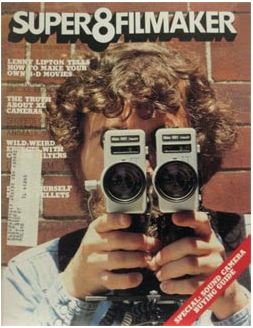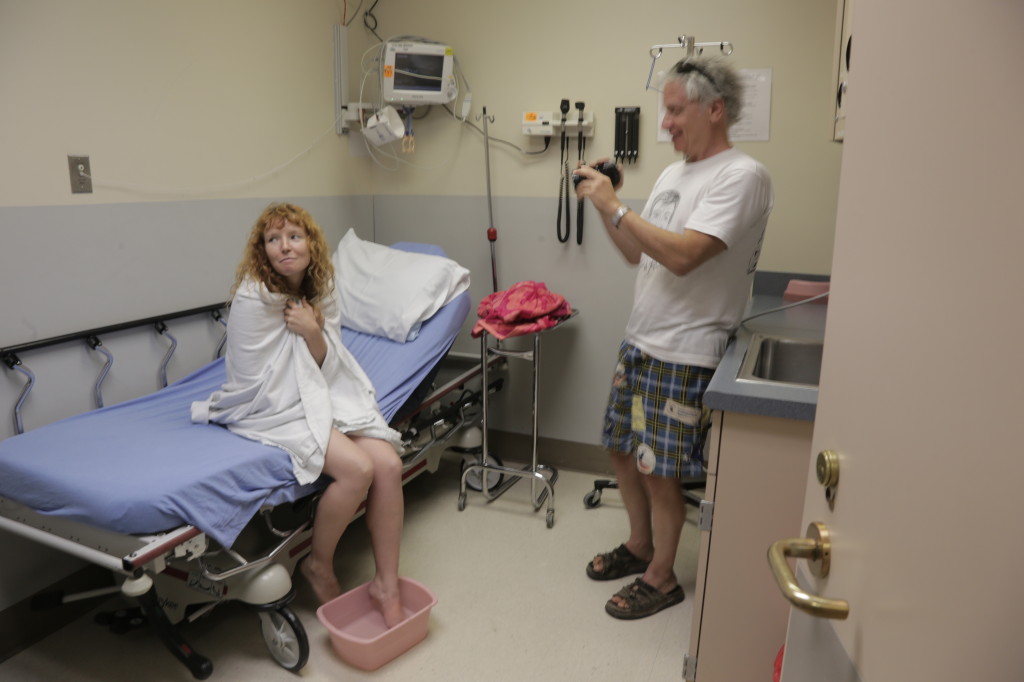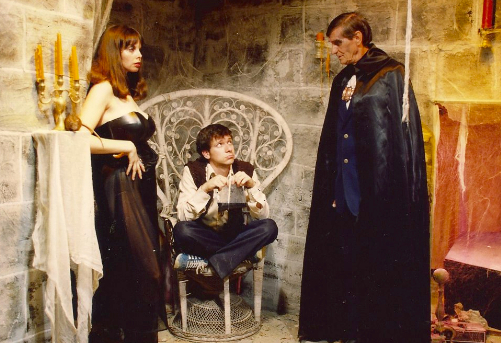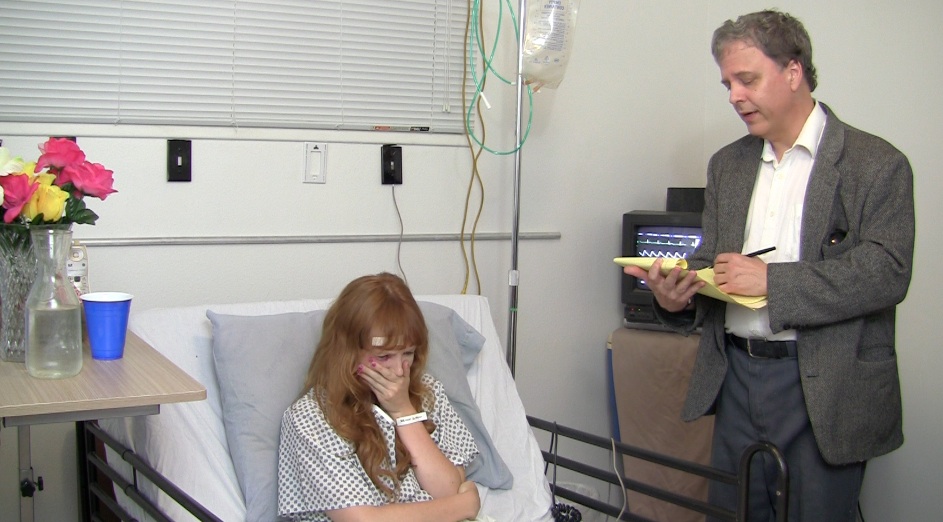

I have a lot to say about this, but I’ll try to keep it brief (and most likely will not succeed). Many have asked me over the years why after nearly ten feature films, I have never considered going SAG (ie becoming a signatory with the Screen Actors Guild). The short answer is simplicity. Movie making is complicated enough, and indie movie making with a budget of pocket change, even more so. An indie filmmaker doesn’t have the luxury of having one person for every job on a production. There usually isn’t one person to drive, another person to handle props, another person to do the accounting, and so on. On films like mine, most jobs are handled by the ‘core’ group, which may consist of the producer (who in many cases is also the writer, director, editor and anything else that’s required to get the film going), and one or two others who have devoted their time and energy to see a project through to its conclusion.
An indie filmmaker’s goal is to get a film started and follow through to the finish, with as few complications as possible. They will snag shots where they can, they will bend or break ‘rules’ and in many cases work beyond normal hours. They will be completely consumed with getting what’s on the page to the screen as quickly and as painlessly as possible. If something unexpected happens, like an airplane crashes into a diaper factory at 3am, the director may call up his lead actor, ask him to get into wardrobe and meet him at the location, so he can snag shots of him running near the burning building holding two dogs and a lizard, which will then be cut into the finished film. This should be nobody’s concern other than the director and the actor involved. In fact, the actor would be completely within his rights to say, ‘no,’ and doesn’t need a union’s permission.

In the current film we’re working on, “Rage of Innocence,” while filming in the ocean, one of our actresses got stung on the foot by a Stingray. We took her to the emergency room, and while there, we had her get into character, and we started filming an unwritten scene of her being attended to. The scene is in the trailer, and will be in the finished film. The beauty of the indie film is that one can roll film whenever and wherever it is deemed necessary.


Now, try to make a film like that whilst under the umbrella of a SAG agreement. You are basically dictated when and how you can film your movie. The spontaneous call at 3am to an actor couldn’t even be considered unless you were prepared to make some sort of compensation which you may not have in the budget. But why do I really avoid the trappings of SAG? Well, in addition to the already complicated task of doing what you can to get your film on the screen, you are required to:
– keep track of and pay SAG pension and health.
– follow a strict and narrow set of guidelines.
– have an accountant to take care of withholding taxes, social security, disability and unemployment insurance.
– understand that SAG gets an interest in your film and rights, which will complicate things in the future if this film goes anywhere (which odds dictate, it unlikely will).
– submit a fully detailed production budget, schedule and script to them.
– provide a detailed report of actual expenditures this film has undertaken. Meaning that if you buy envelopes or paper clips and you take money from your budget to do it, it must be written down as petty cash, or some sort of record to justify the expense.
– If your film sells to DVD or Internet, share licensing fees.
– Every week, you need to send the SAG paperwork listing all hours worked, overtime, taxes, etc.
There are a lot more rules you are required to follow, but the most devastating one is that you are also required to sign SAGs basic agreement, which has more conditions and restrictions than the Catholic religion. That’s the major deal breaker for an indie like me. Many of my actors are SAG, but have either gone financial core, used a different name, or just didn’t worry about it. Some of my other actor friends (not many, but a few) are afraid of breaking SAG’s Global “rule number one” – which is NEVER act in a non-union film, in any country, at any time – and because of that rule, have passed on great roles, that may have led to even greater roles. As an actor, it’s all about acting, and having people see your acting. If you don’t act because your union won’t let you, what are your other options: community theatre? You can wait for Tim Burton’s people to call you, but why not increase your opportunities? Those opportunities come in the form of non-union films which, by the way, outnumber SAG films by a substantial margin. The only reason an indie filmmaker should consider going SAG is if they get Julia Roberts or James Franco to star in their film. A-list performers, for the most part, won’t do a non-union production, so in that case it might be worth the compromise. Of course, in that case it’s likely that a lot of money will be available and a lot of money will be spent, so I would imagine it would be worth it to all concerned. If your productions get big enough, it’s tough to avoid SAG. They will come to you (they did it with the Power Rangers producers years ago). They’re kind of like Al Capone was in the late 20’s. He didn’t bother you if you ran a small speakeasy out of your basement. But if you started bootlegging large quantities of booze and your customer list got bigger, his cronies would require you to buy from him or suffer severe consequences – Al Capone’s global rule number one.
Once, back in 1999, SAG called in many actors that I have used in films and slapped them on the wrist for appearing in my movies, dating back to my first feature, A Polish Vampire in Burbank, shot in 1983 on Super 8 film! They told the actors that they had no business appearing in this non-union film. Now this was back in a time when there were no digital cameras or home consumer video equipment, so a person making feature films with a ‘home movie’ camera was pretty rare. SAG felt that the actors broke their most sacred rule by appearing in a non-union film. Of course, my argument would be that Polish Vampire was nothing more than a glorified home movie, and had it not gotten distributed like any mainstream movie, nobody would have cared. But the fact that it got distributed for home video distribution and USA Network, the actors, in essence, got punished for its success. THAT was the first time I felt that SAG and I were not a good match.

There is a reason some people are not into getting married, and that’s the same sort of reason that I avoid becoming a SAG signatory (or any union for that matter). When I make a movie, my goal is to get it done. I don’t need anyone over my shoulder telling me how I can make a shot, which actors can speak and which can’t, what paperwork is required before I go onto another day of filming, and what can and can’t happen to the movie when it’s done.
The Screen Actors Guild was established in 1933 (coincidentally, a year after the end of Al Capone’s reign), at a time when actors were basically a studio’s property. Back then, an actor couldn’t make a decision without the studio’s consent. They couldn’t take roles at other studios unless the studio would ‘loan’ them out. They had clauses in their contracts that would basically limit what they could do or say, on or off screen. In all honesty, actors needed a union to protect them. Today, SAG is basically outdated. If you’re a name actor, you are in control of your own career. If you’re an unknown actor, you want to and need to work whenever you get the opportunity. And those opportunities don’t come along often enough. An actor can stick by SAG’s rules and only work on SAG films, which in essence means they can wait tables in a restaurant or drive a cab while waiting for Quentin Tarantino to call, or they can audition for any of the countless non-union films and increase their chances of furthering their careers.

In over 35 years of filmmaking, very few of my cast or crew have walked away unhappy. I don’t make promises I can’t keep. I don’t make demands anyone would deem unreasonable (for the record, I have never called an actor at 3am and asked them to be on an improvised set), I have never asked an actor to give up anything but their free time to work on any of my films. If an actor gets an unforeseen commitment, whether it be a job on another film, an audition, or a free ticket to a Yes concert, I always work around their schedules – either shooting around them, or rescheduling the shoot to a later time. When we make a movie, we do it because we love our craft, not necessarily because it will make us all rich. Those who choose to participate in our films, be they actors or crew, do it for the joy we get creating films. I have actors, cinematographers, visual effects artists, music composers, producers, etc. that have been active in the Pirromount ensemble for decades. Many of them work professionally in the business, but would do it for free, and many times literally do. This is how we can make movies for less than the cost of Melissa Macarthy’s gym membership. And since the actors and crew are not necessarily doing our movies for a wage, they are really not working for me, and therefore not breaking any union rules. They are technically donating their spare time, and I don’t believe SAG or any union can dictate how a person spends their spare time.


